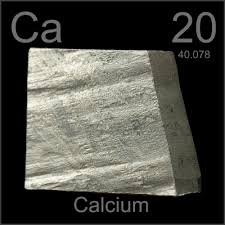Profiling Essential Nutrients for Plant Health:
Calcium & Boron
A good analogy in the mineral world is that Calcium is the trucker, in that it moves all the other minerals, but Boron is the truck driver. A boron imbalance appears as if the truck has driven off the road. Calcium shortages often show up in tandem with Boron and Silicon shortages. A steady supply of these two plant nutrients are needed throughout the growing season.
Calcium is an essential nutrient for good plant growth and structure. It is an integral component of the cell wall, as well as helping to hold cells together. Calcium regulates the uptake and movement of nutrients into the roots and throughout cells within the plant. Insufficient calcium in plants leads to disease and insect proliferation. Pathogenic fungal hyphae cannot penetrate well-built cell walls.
There are many calcium sources available; among some are: aragonite, gypsum, hi-cal lime, and dolomitic lime. It’s very important to choose the best amendment option based on lab results of a soil sample, pH, the cause of deficiency, soil quality, texture and ratios of other minerals. Because our soils here in central New Jersey and Pennsylvania are typically heavier, clay soils, we usually avoid applying dolomitic lime unless a lab analysis also shows a magnesium deficiency since magnesium tightens soil particles. Instead, we might choose aragonite as a soluble form of calcium that’s available for quick plant uptake. Since it essentially comes from seashells and oyster shells, it also includes an array of seawater trace minerals and micronutrients like boron, sulfur, iron, manganese and zinc. Gypsum, another calcium source, supplies soluble calcium along with sulfur with minimal effect on pH. It also serves to improve overall soil tilth, as well as water infiltration and percolation.
Boron is a small but mighty element, with a narrow range of 1.5-3ppm (parts per million) needed for healthy plant growth and reproduction. It’s 1 of 7 micronutrients essential to all plant growth, and involved in cell division, pollination and cell-wall synthesis. Too little boron results in: deformed flowers, new shoot dieback in spring, bushy stunted growth, irregular-shaped leaves, poor fruit set & development, strange-shaped fruits, and hollow or hard cores. Too much boron: Plant toxicity and death.
Boron deficiency is one of the most widespread causes of reduced crop yield. As a negatively-charged particle, it can attach to other elements in the soil and leach out. It’s also removed from the soil by crops so must be replenished annually. Since it is immobile in plants, once incorporated into various plant structures, it’s unable to be translocated to other parts of the plants. That’s why meristematic tissues (the youngest and newest leaves) are the first to exhibit deficiency symptoms, and why a continuous supply is needed throughout the growing season. When lab results indicate a deficiency, we recommend broadcasting boron and supplementing with a foliar spray during peak growth periods.
A good visual when applying (elemental) boron, is that of using a salt shaker to do so….sparingly.
Next blog on Essential Plant Nutrients: Sulfur….
For more on soil testing and remineralization visit: Soil Testing
GET THE LATEST NEWS
Subscribe to the Organic Plant Care Newsletter and get timely and helpful tips and updates monthly.
There's no spam - we promise!







